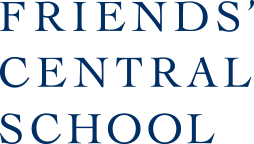
Whether you’re currently a student at a public high school looking to make a change, or you’re a middle school student approaching the end of 8th grade, then you know just how exciting and important a decision choosing a high school to attend can be. High school is, after all, where you’ll spend some of the most formative years of your life; you want to be sure that you are choosing the right one.
When choosing a high school, it’s important that you fully understand all of your options so that the school you ultimately attend will be one that best fits your academic, extracurricular, and personal aspirations.
Free Downloadable Guide: Take a Closer Look at Friends' Central School
One such option is an independent high school.
Here, we explore some of the key differences between public and independent high schools so that you can better decide which can better help you reach your goals, and also discuss when it may make sense to make a change.
Differences Between Public and Independent High Schools
Every high school, whether public or private, is of course unique; no two schools are one hundred percent alike. That said, public and independent education tend to be substantially different in a few key areas, regardless of the school. Some of the most important of these differences include academics, class size, and philosophy.
Academics
Generally speaking, independent high schools and public high schools tend to approach academics very differently. In public school systems, great emphasis is placed on standardized testing—as is typically required by law. This often means that public schools must “teach to the test” and follow very strict lesson plans to cover all of the necessary material that will be covered on the test.
Independent schools, on the other hand, are less restrained by standardized testing. This allows for greater freedom and flexibility in the curriculum, and prioritizing true mastery and understanding of a concept as opposed to simple memorization. Often, this will include:
- Participation and collaboration: Each student is truly part of the larger community, and students often work together generating knowledge and making discoveries that further their understanding of academic material.
- Discussion: Through dynamic discussion with peers and teachers alike, students are able to develop a better understanding of the concepts at hand. At Friends’ Central, for example, it’s not uncommon for students to lead 80 percent of a discussion about literature.
- Active vs. Passive Learning: Students are encouraged to become active participants in their education, rather than passive observers. This environment, in which students are encouraged to lead the charge in their classes, helps them not only learn the material, but prepare themselves for more critical thinking in the future.
Class Size
Because Independent schools value discussion and discovery, they often have smaller class sizes compared to public schools. With smaller classes and a lower student-to-teacher ratio, teachers quickly get to know each student’s strengths and growth areas, which allows teachers to challenge students as individuals, often personalizing aspects of the curriculum for each student.
Smaller overall class size can also often mean that students have more opportunities to participate in the activities that interest them, from leadership positions in student government and clubs to sports teams and everything in between. Being a part of a smaller, more select student body allows each student to really explore their interests, and create their own opportunities.
Philosophy
Some independent high schools are affiliated with a particular religion and some are purely independent in nature. Regardless, one common feature they share is their “whole student” approach to education. Acknowledging that each student has their own set of skills, passions and abilities, teachers at independent schools set their sights on nurturing those interests and talents first and foremost, allowing students more opportunities to excel.
In independent high schools, excellence is encouraged, and students who excel are celebrated, rather than diminished among both their instructors and their peers. Whatever the motivation, independent high schools encourage all areas of interest:
- Academics
- Athletics
- Arts
- Community involvement
- Leadership opportunities
Knowing When to Make the Switch
There are many reasons to make the switch from a public school to an independent one. Only you and your family will know if you’re truly ready to make the change.
A lack of academic rigor and emphasis on standardized testing is often cited by students transferring from a public school to Friends’ Central. When asked why she chose to make the switch, one current student said, “I wanted an academic experience that wasn’t centered around standardized tests. My old school had a lot of classes, like biology, that were taught for the sole purpose of having students pass the PA Keystones.’”
Some of the other common reasons students choose to make the switch include:
- Feeling bored academically, or finding that you are no longer being pushed and challenged by the coursework at your current school
- Feeling unknown, or that you are just one face in the crowd
- Feeling as though you do not have the freedom to explore who you are as an individual, or as though you’ve been forced into a particular “box”
- Craving a greater emphasis on community and inclusion
- Wanting to participate in activities (like drama, student government, or various sports teams) but not being able to compete for limited spaces
Embracing the Independent School Environment
Only you know why you’re considering making a switch to an independent school, and whatever your reasoning, the move should be one that’s right for you.
If you’re considering making a change, the best place to start is by speaking with an admissions counselor at the schools that you’re considering, as they can help answer many of the questions that you might have. Afterwards, visiting and touring the schools on your shortlist and speaking to other students currently enrolled can help you understand whether the community is the right fit for you.



